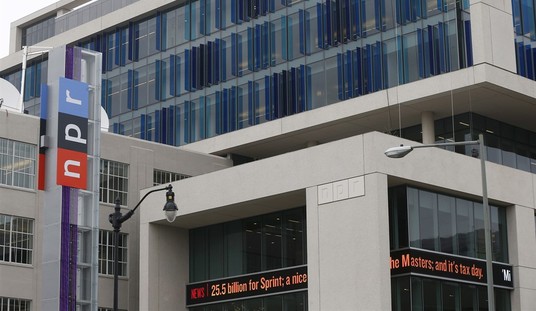The smoke has finally cleared, and the final numbers are now in. Last year saw a frenzy of merger and acquisition (M&A) activity, especially in the oil and gas sector.
Between Jan. 1 and Dec. 31, oil and gas companies signed a total of 191 deals representing $186.5 billion. That's a sharp 35% increase from the $138.5 billion that changed hands in 2010.
The proceeds were spread throughout the energy sector. Oilfield equipment companies notched eight deals in the fourth quarter that accounted for $4.5 billion, or 5% of the total. Downstream refineries captured another 5%. Upstream deals represented 30% of what was spent. But pipelines and midstream assets were the biggest recipients, with 12 transactions totaling $48 billion, or 60% of the industry deal.
And you can be sure all that activity led to some serious gains for investors with the foresight to see it coming.
Because M&A activity ran hot and heavy in the energy sector in 2011, I'm advising readers of my Energy & Income newsletter to keep their ears to the ground in 2012.
First, there's perhaps no surer catalyst for a quick gain than buyouts, joint ventures and asset sales. Just prior to the launch of Energy & Income last fall, I was fortunate to have landed two takeover offers on the same day with my other two advisories.
On Oct. 17, independent producer Brigham Exploration caught the eye of Norway's Statoil (NYSE: STO) and received a $4.4 billion bid that amounted to a 36% premium over where the stock had been trading. At the same time, Kinder Morgan (NYSE: KMI) put El Paso (NYSE: EP) in its crosshairs, and El Paso immediately vaulted 25% -- its biggest daily gain in three years.
In both cases, the consolidation not only benefited the company being acquired, but it made good economic sense for the acquirer as well.
But that's not the only reason you need to closely monitor these types of transactions.
Recommended
Here's why all of this deal making is important: There's one thing all of this activity is telling me, is that the market is consistently underpricing North America's unconventional oil and gas reserves.
This reason sole fact could be the single best argument for further gains for investors in the energy sector.
Let's look at the parties involved... Private equity groups are hungry for energy assets. And foreign multinationals initiated more than 40 transactions last year, worth more than $50 billion. These deals are tantamount to private market appraisals -- and they consistently go for more than what they're valued on the stock market.
I'll give you an example...
Statoil was interested in Brigham Exploration because of its 375,000-acre position in North Dakota's Bakken Shale. And the $4.4 billion acquisition meant Statoil was willing to pay about $12,000 per acre. So what does that imply for a neighbor such as Whiting Petroleum (NYSE: WLL) that is sitting on 683,000 Bakken acres? At a similar valuation, Whiting's Bakken resources could potentially fetch $8.2 billion (not counting other assets in Texas and Colorado). Yet, the company has a market cap of just $6.4 billion.
And then there's Chesapeake Energy Corp. (NYSE: CHK), which sold the rights to 142,500 acres in the heart of Ohio's Utica Shale to Total (NYSE: TOT) for $2.14 billion -- or $15,000 per acre. That says a lot about the other 1.1 million acres that Chesapeake holds in the region.
Valuation aside, staying tuned to the latest M&A developments can provide a wealth of other instructive clues. In this case, they underscore three big trends that are emerging...
One is the obvious desire for large foreign oil conglomerates to plant their flag in unconventional North American basins -- not only for the growth potential, but also for the practical knowledge gained in working with experienced U.S. partners. That expertise can then be applied to challenging shale plays in Europe and Asia.
Many are writing big checks for productive assets. But this isn't just about integrated oil giants looking to boost their oil and gas reserves (at an attractive cost per barrel or Mcf). It's also a power struggle to build or acquire the vital infrastructure needed to move these commodities from rural production grounds to major population centers.
Next, it's clear that the wide price discrepancy between oil and gas is fueling heavy investment in liquids-rich plays. This bodes well for upstream and midstream players entrenched in wetter reservoirs such as Texas's Eagle Ford.
Finally, there's no doubt that shale plays around the country are behind a domestic energy renaissance. I've written about this numerous times before, but the 85 shale-related deals worth $107 billion signed in 2011 only serve as confirmation of this fact.
Bottom line, the private market is an astute judge of valuation. So all these deals should help put a more accurate (read: higher) price tag on other independent producers and MLPs (master limited partnerships) in the sector.
Risks to Consider: You shouldn't buy shares of ANY stock just because you think it might get bought out or land a major strategic deal. Do your due diligence, and if any talk about a deal proves to be right, then it's just icing on the cake.
Action to Take --> One by one, high-profile, multi-billion dollar deals are providing some clarity to what prized shale acreage is really worth. Many of my Energy & Income portfolio holdings have been right in the middle of all this.
These deals also allow companies to monetize their assets and secure a low-cost source of funding. All in all, the $186 billion in M&A activity is a bullish signal and a strong vote of confidence in the energy sector. If you don't have exposure to this sector, or think you may not have enough exposure, then I highly encourage you to take another look.
This article originally appeared at StreetAuthority.com
























Join the conversation as a VIP Member